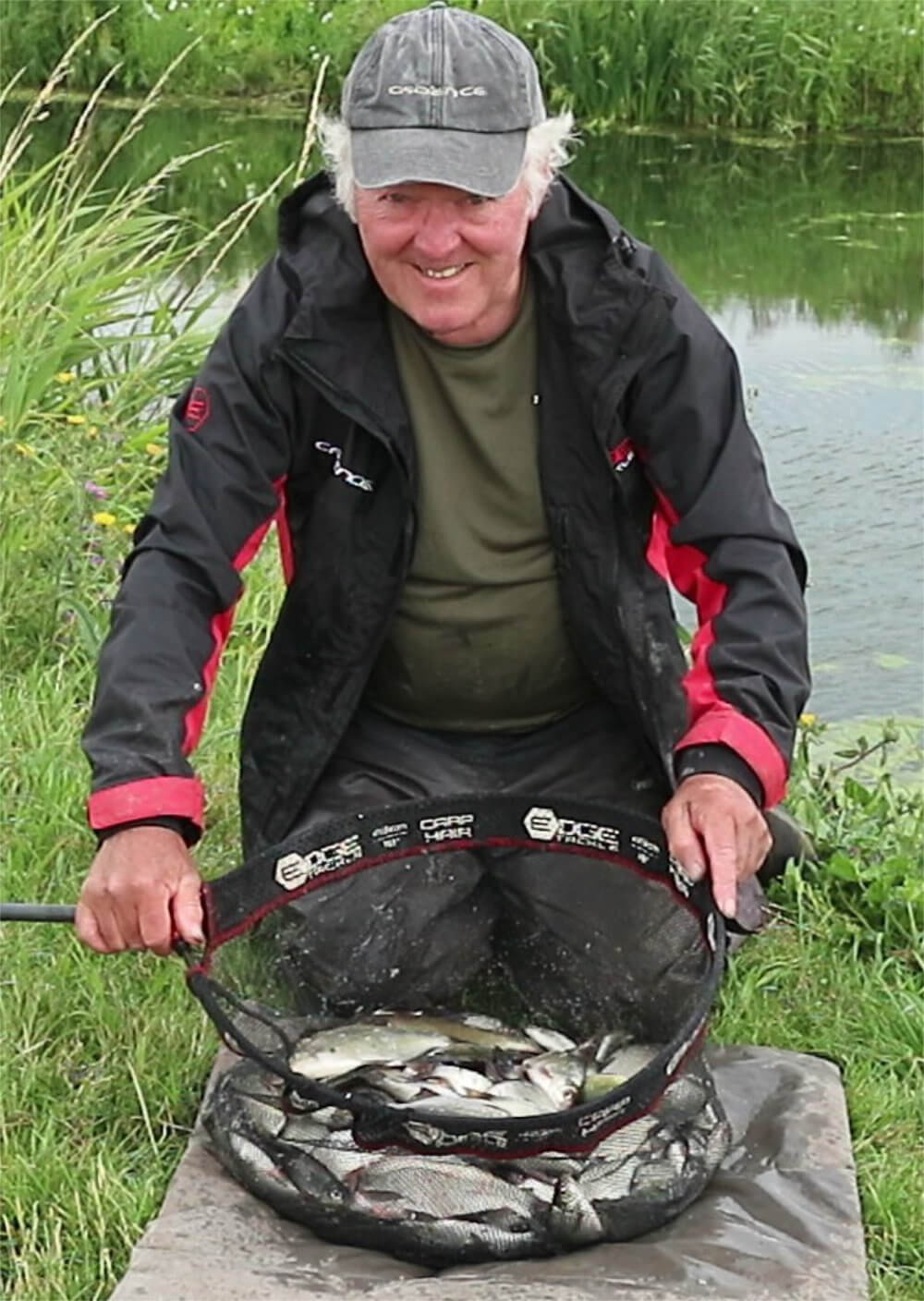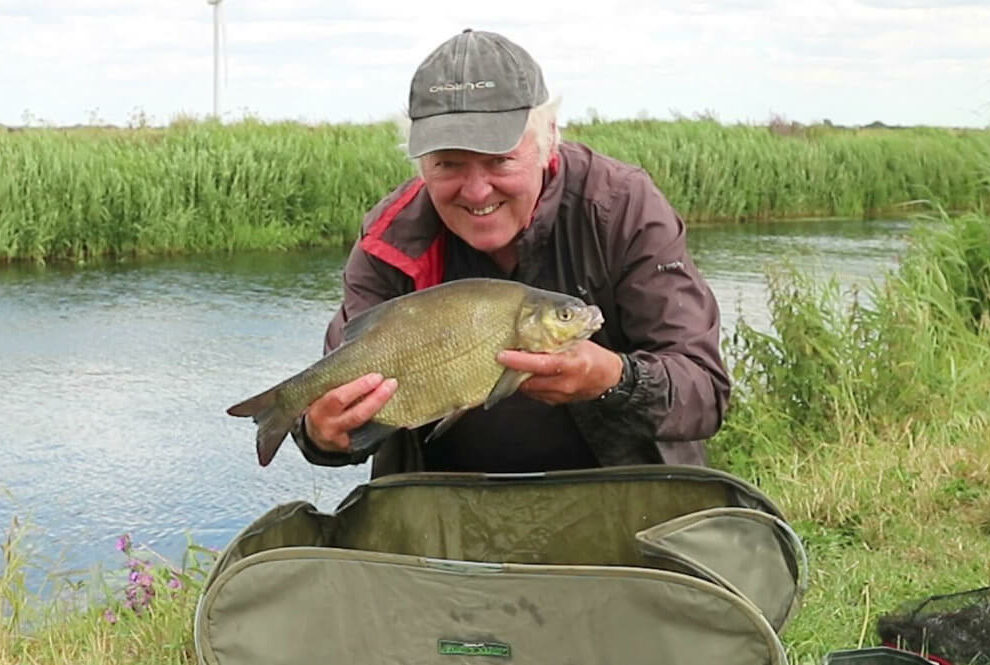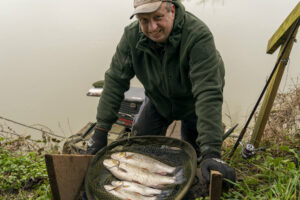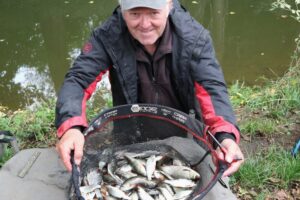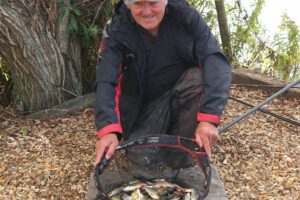Feature Peg
Last summer, well before the busy match scene kicked in on the Old River Nene, I enjoyed a great session on the pair of big willow trees at Benwick. Back then I caught plenty of bream and a solitary tench, mainly due to the dense far side cover, considering it was a blisteringly hot day. It was similar conditions this time round, only the lefthand willow had been severely pollarded. All the branches were gone, along with most of the overhanging ones from its sister tree. The big house opposite was still boarded up and empty, with its once manicured gardens and frontage now heavily overgrown. There was a boat moored up, but it didn’t look like anyone was on board, so I picked a swim between that and the missing features. I didn’t want to risk being too close to the old hotspot, suspecting there would be lots of sunken debris from all the recent work.
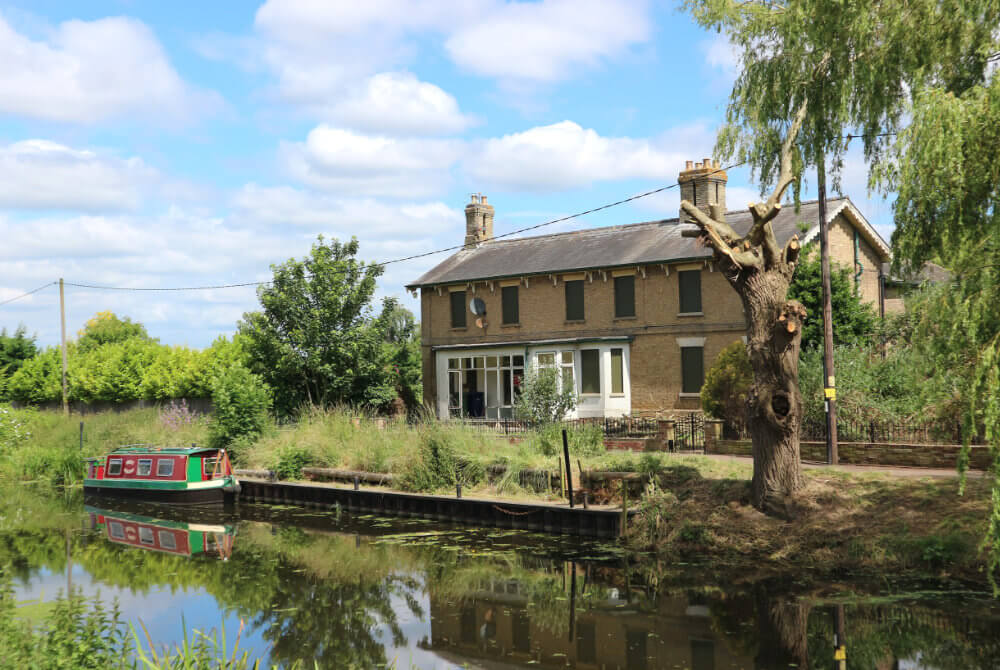
In The Shade
Andy Griffiths was with me and picked a swim the other side of the now sad looking area, which had looked so picturesque previously. There was hardly any breeze, and it was uncomfortably hot, so we both pole fished from underneath our umbrellas to avoid getting frazzled by the sun. The river wasn’t quite as weedy as it had been the previous year, with some clear spots down the main boat channel. As is normal for this venue, after introducing some groundbait, it became impossible to get a maggot to the bottom. It came alive with small bleak, rudd, perch, and roach. This prompted a try with hard pellets, but they kept catching up on fine bottom weed and were quickly put away. Suddenly, there were telltale signs of something big knocking about, with occasional small clusters of bubbles hitting the surface around my feed area.
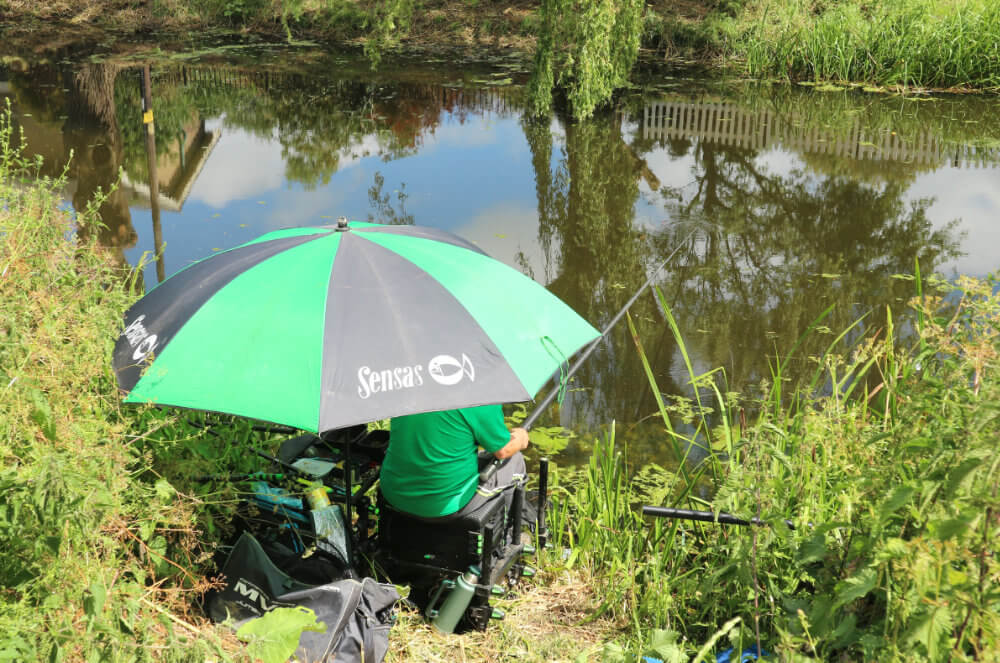
Not Easy
I decided to take the double caster route, using dark shells to try to get through the small fish, along with dumping my rig in to get down faster. This tactic worked most of the time, and then it became a waiting game, using my Cadence CP800 Margin Pole at full length down the middle. The bubbling continued but, annoyingly, small fish still managed to engulf the bigger mouthful I was offering. Eventually, a quick bite found me attached to a lively tench, followed by a couple more coming adrift when they charged into unseen underwater clumps of thick stringy weed. I persevered, catching a few hand-sized silver bream, landing another tench and a big skimmer. The main bream shoal seemed to be missing, maybe moved on by all the recent disturbance. Andy lost one good skimmer and I managed to lose another tench in the margin weed.
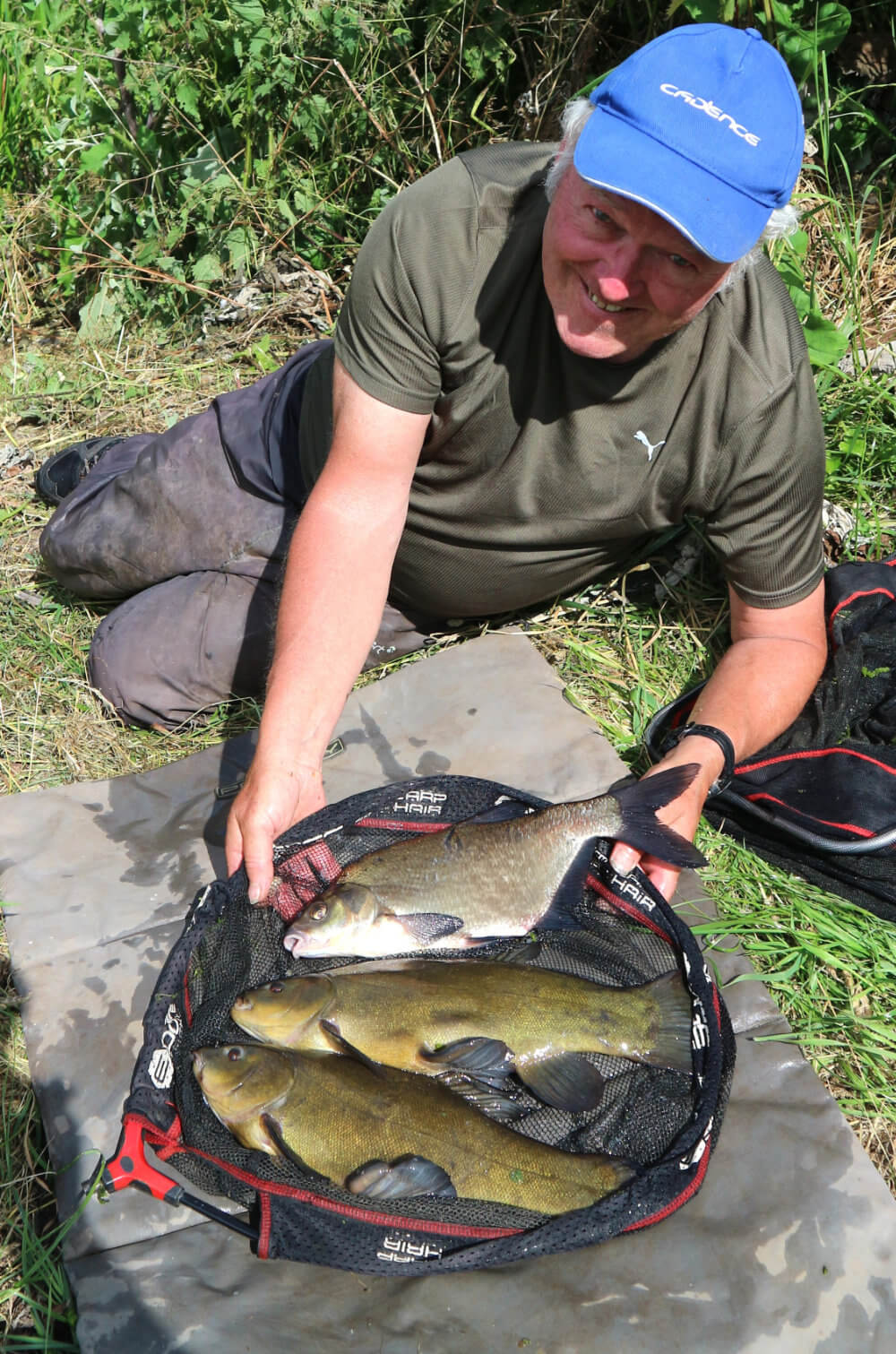
Return Visit
Not happy with our results, we decided to return the following weekend. Arriving at the pegs we fished before, we found the other willow had been cut right back too, leaving the far bank looking sadly bare. Andy told me he had seen a post on the internet saying some baited hand lines had been discovered on the moorings opposite, so we decided to beat a retreat to the Nene Parade section. That has proved another good tench area, plus it’s a pleasant place to fish. A similar pattern quickly emerged where groundbait pulled in small fish instantly. I again tried banded pellets to get through, but they were mauled most of the time. Once again, the river was painfully clear to the extent you could see the streamer weed either side of the boat channel. But at least someone had previously raked the swims, saving us all that hassle.
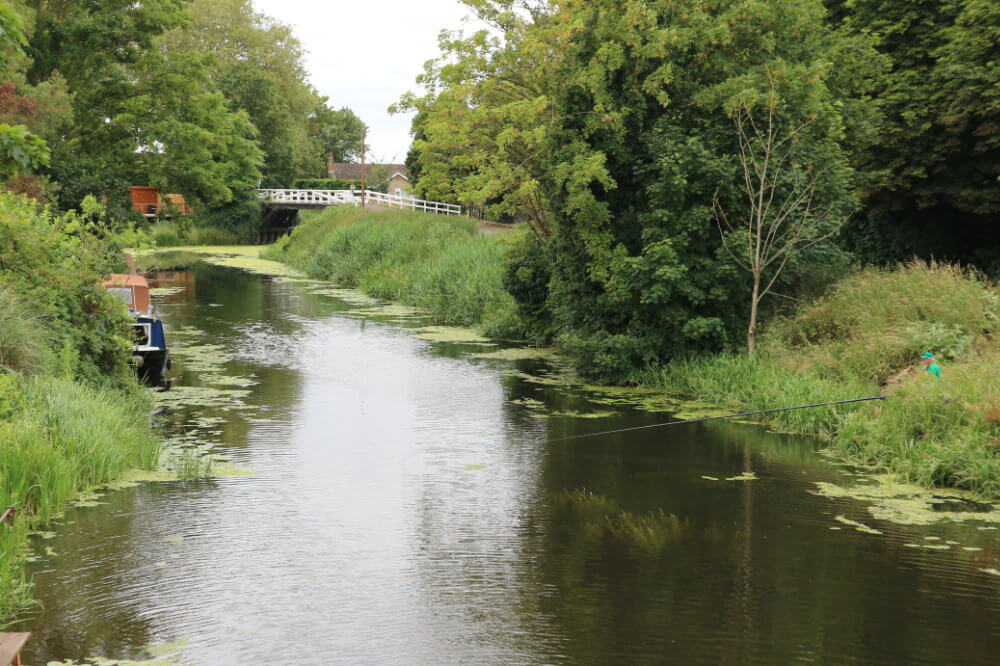
Similar Pattern
Like the previous week, the main task was trying to find ways of avoiding the small stuff. At such a weedy time of the year it pays to be positive to pull big fish in, but heavy feeding activates loads of tiny bleak, roach, rudd, perch and silvery bream. With no signs of any bubblers it was hard going. Andy appeared to be plundering the bits for a while, which also resulted in a couple of better skimmers, but I still had my big fish hat on. I was taking the double caster route again, mainly avoiding the sprats, finding a stray skimmer close to the pound mark. I was close to changing tack, considering having a go at wading through the small stuff, when a fizz of bubbles erupted around my float to keep me interested. However, before whatever it was had a chance to find my hook bait, a rare boat ploughed through and stirred everything up.
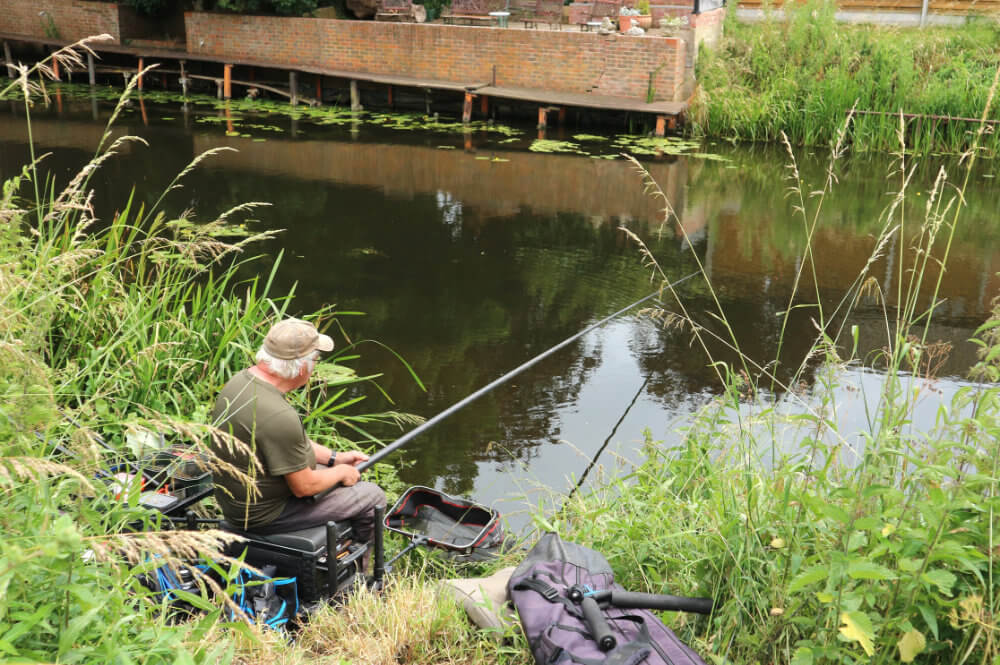
Chasing Bubblers
It took a while for things to settle down and even longer for odd patches of bubbles to return, but when they did, I hooked the culprit. It tore off like a rocket and weeded my pole rig. Applying steady pressure, a tench eventually came free with a big clump of green stuff draped over its head, giving up the fight, so I could land it. After disentangling all the rubbish from my line and the fish, it was around the three-pound mark, but had pulled like something much bigger. It took a while for the swim to settle down again, and when it did, odd fizzes of bubbles returned. This was a clever fish, carefully working its way around the edges of where I had been cupping in groundbait. It wouldn’t go near where I was dropping my float in, so I tried to guess where it would go next. I lowered the tackle into a new spot and got it right when this corker resulted.
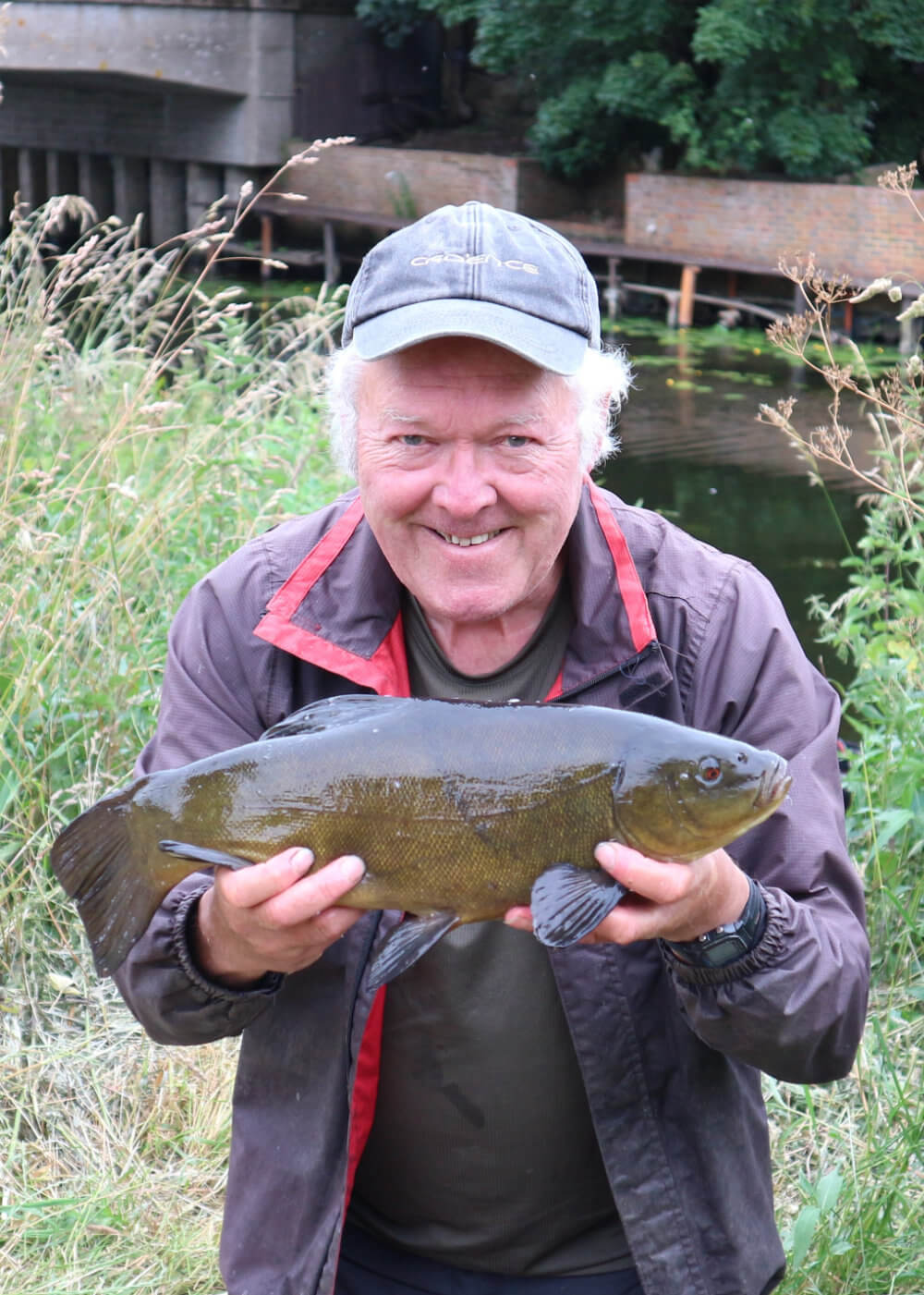
Nice Surprise
I left the Twenty Foot River alone for the first couple of weeks of the new season because it can take a while to wake up. It was very weedy last summer, as you can see from this photograph, so for my first visit I went well armed with a big rake head and plenty of strong rope. To my amazement, none of that was needed. Apart from the odd clump of growth down the margins, the waterway seemed remarkably clear. I set up my Cadence CP200 Whip at 6 metres with a 2gr olivette rig as it was blowing a gale. After plumbing up, I tried running the tackle through a couple of times before putting any bait in and caught two small skimmers on double red maggots. Initial small balls of groundbait fed by hand spooked the fish, but keeping up regular feeding eventually began to pull plenty of bites and more skimmers up to 12oz resulted.
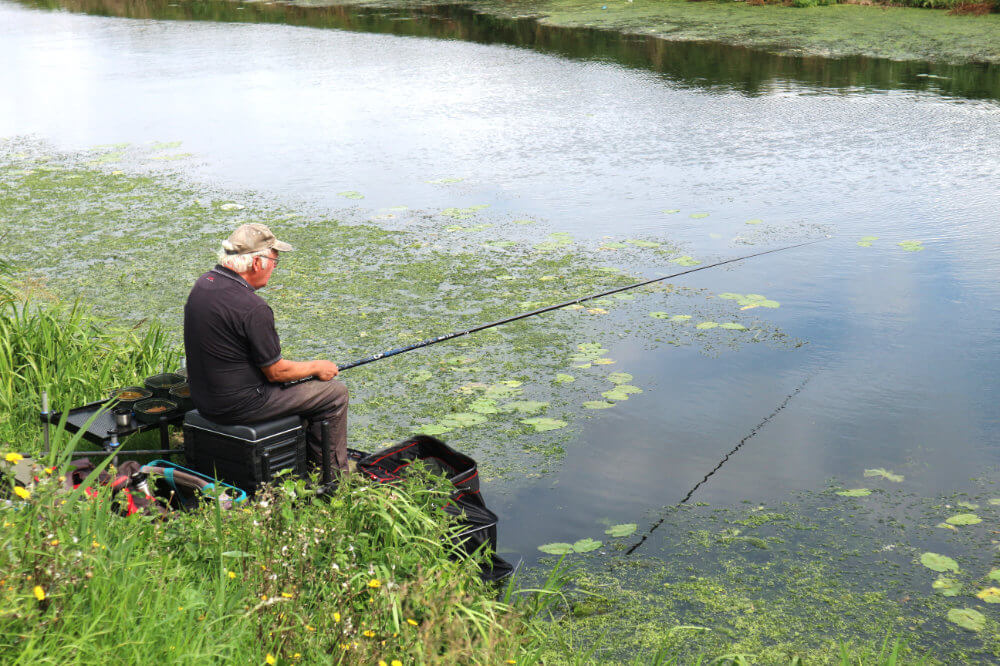
Discovering More
I was still trying to fathom out what had happened to the weed, wondering if someone else had fished the peg and cleared it out, or if it was missing due to the unusually wet spring we had endured. The whole stretch looked remarkably clear. I soon found out the answer when two small craft appeared and moored up 100 metres away. Two guys with bright orange jackets came along and asked me what I thought about the current state of the waterway. I told them I was enjoying catching plenty and everything was fine. They explained they were using weed cutting boats and had been working through here recently. I thanked them and got a few tips about areas where they had seen signs of big fish as they worked through the Middle Level system. Plenty more skimmers followed, and it was better than the same time last year.
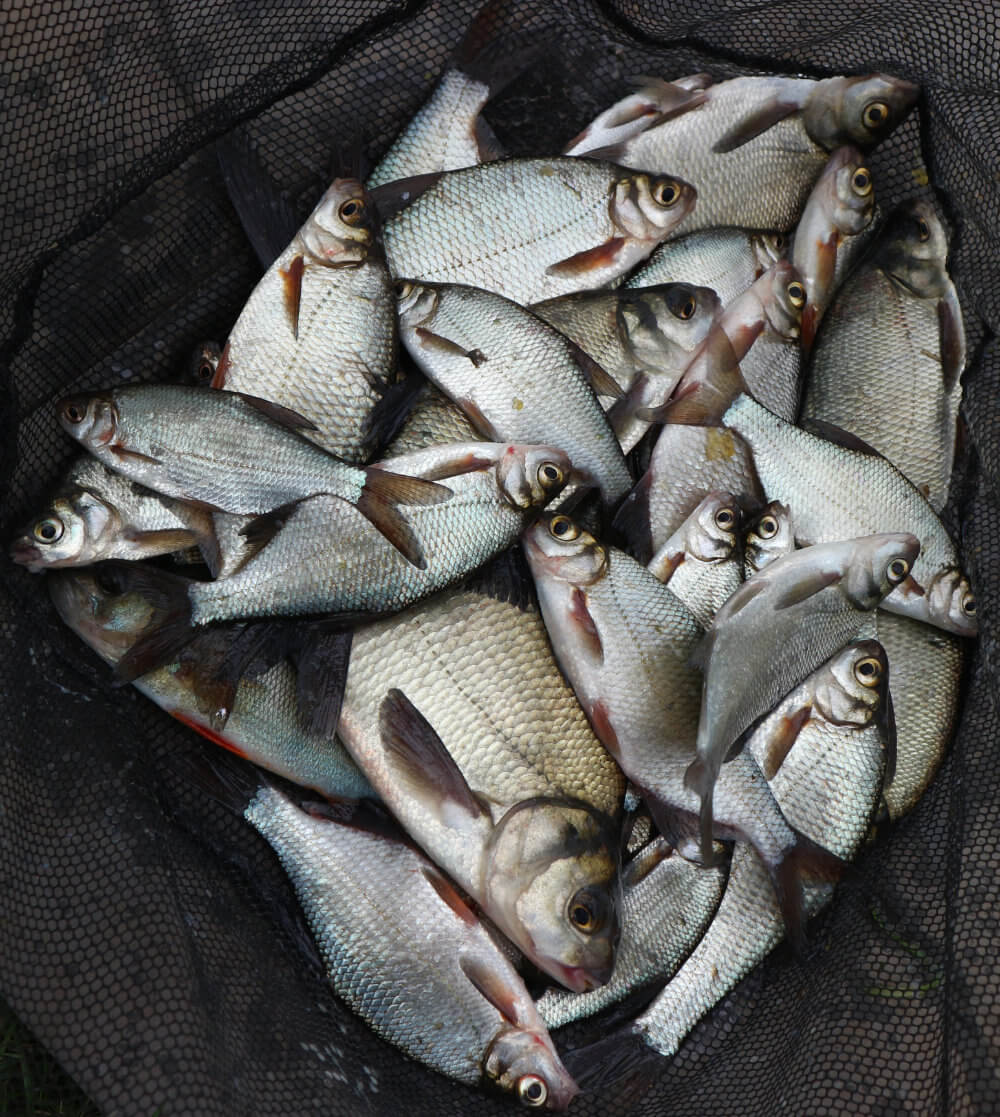
Going Back
Revisiting the same peg a few days later, I set up my Cadence CR10 11ft Feeder #2 quivertip rod, kitted out with the smallest and lightest Edge Plastic Cage Feeder. Last year it was almost impossible to use a feeder here because it was so weedy. By casting to the far bank and working my way back a foot at a time, I found a reasonably clear spot just past the middle. I still caught the odd bit of streamer or Canadian pond weed, but by casting regularly to get a decent amount of feed in, less and less green stuff resulted. I was soon catching small skimmers, but double red maggots were getting ragged most of the time on the way down by bleak and small rudd. A switch to sweetcorn sorted that out, but didn’t bring much of a response. Small banded hard pellets caught a few hand-sized silver bream, but otherwise it was slow going.
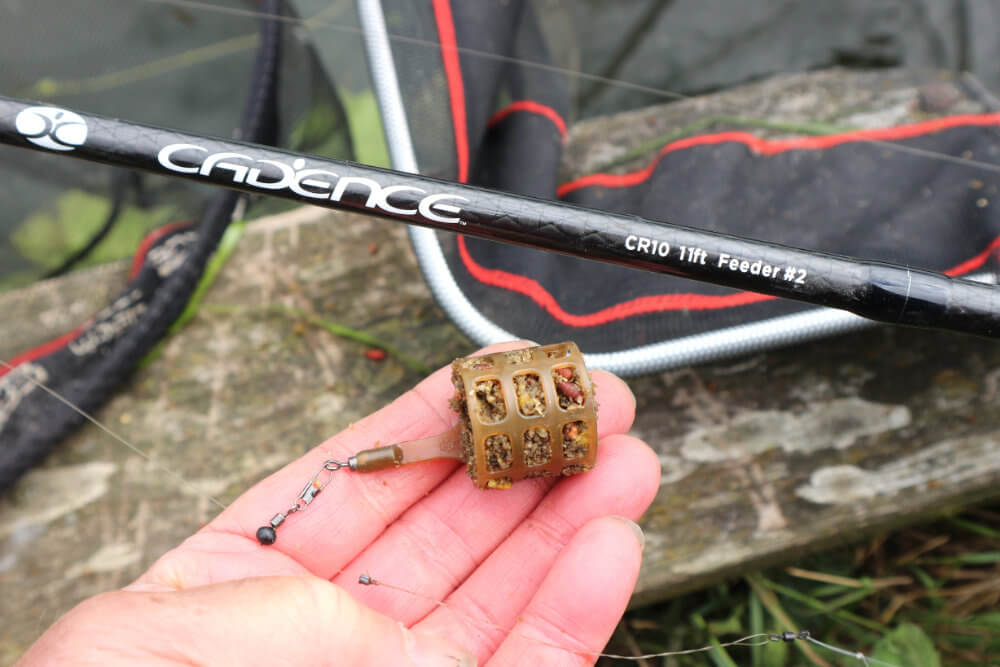
Fen Feeder
The CR10 11ft Feeder #2 is perfect for short chucks on drains and the less wide, slow-moving rivers in Cambridgeshire. It’s often windy in fenland, so I tend to use the 1.5oz solid carbon quivertip the most. There’s also 1oz and 2oz choices, but these are not like other carbon quivertips I’ve used in the past, being much thinner and far more sensitive. Using small Edge Plastic Cage or Groundbait Feeders with this forgiving rod makes the perfect combination for my current bream fishing requirements. I’ve always preferred small and light feeders for lesser chucks and slow flow rates because they dislodge easily when you get a proper bite, creating brilliant drop back indications that are almost impossible to miss. It can take time for bigger fish like this bream to move in, and I don’t want to unsettle a shoal by crashing heavy gear in.
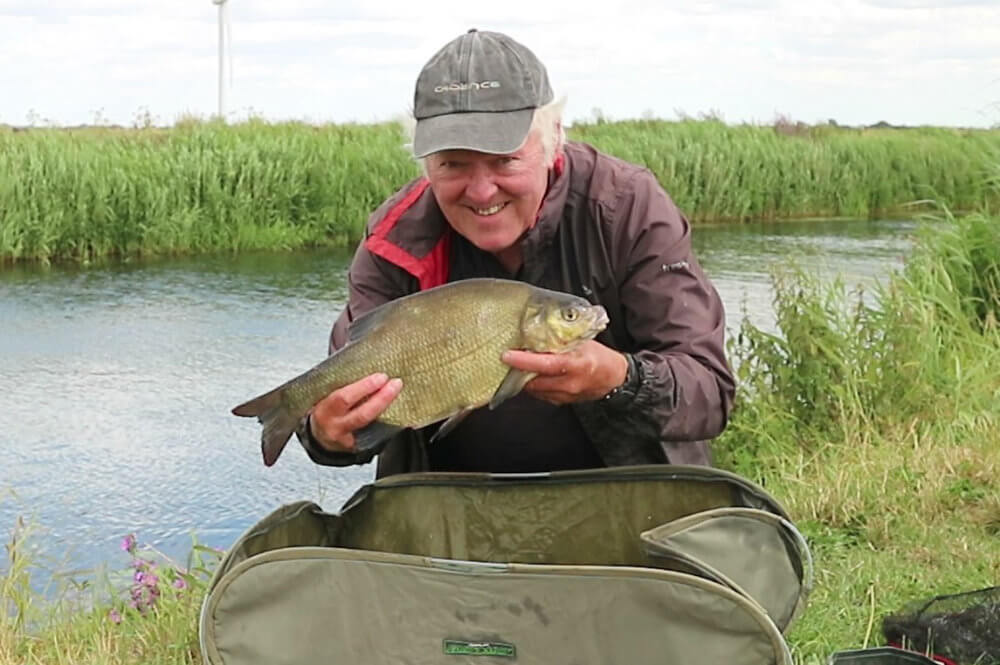
Blending In
Over the years, I’ve had to mess around toning down many types of feeders with sandpaper and a black marker pen. I don’t like using bright or shiny things anywhere near my hook bait. I don’t have to do any of that with Edge designs like this plastic cage model, which blends in perfectly with my groundbait. I attach it to the rig with a clip bead, which allows quick changes. I’m ultra fussy with all the rig bits I use, much like carp anglers, not wanting anything in the swim that might spook shy fish. I just don’t get it when I see super bright swimfeeders in tackle shops, like fluorescent green, even blue ones. Makes no sense to me. I also prefer black nickel or Teflon coated hooks, along with dull swivels when I can get them and dark split shot too. River venues are often clear, so anything that might glint in the sun is out of place.
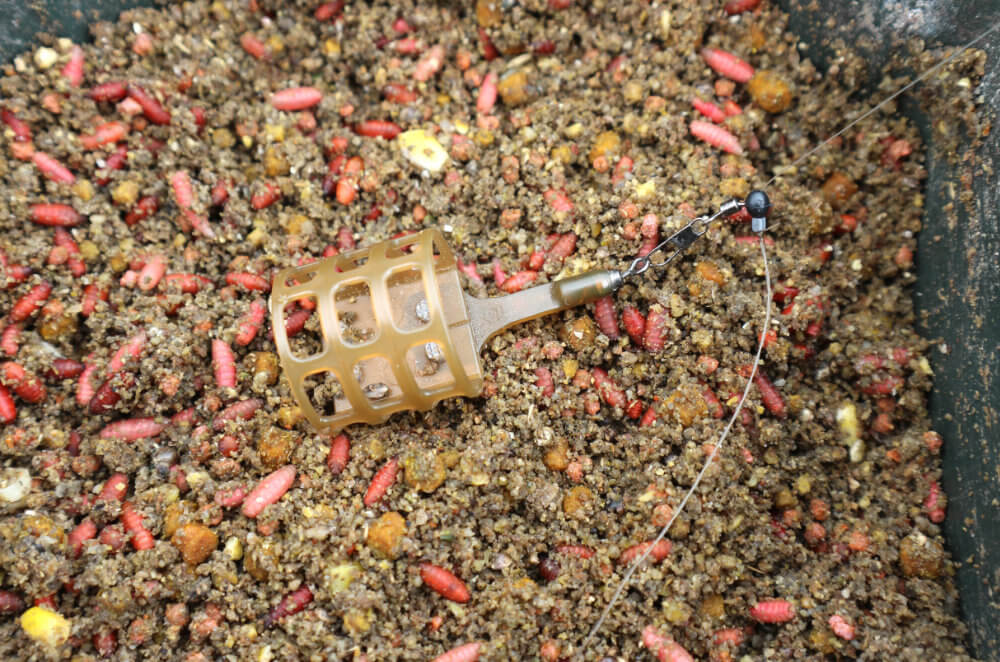
Another Go
When a river venue is stuffed with fish, I like to keep trying different things. There were too many small skimmers about this year to allow the feeder to work to best effect, so next time out I reverted to my CP200 Whip at 5 metres, with just a 1gr olivette rig. Putting in a regular small balls of groundbait, laced with casters and micro pellets, produced loads of bites. Red maggots caught huge bleak and small rudd on the way down, while a single dark caster on a black nickel hook found plenty of bottom hugging skimmers. It was noticeable a lighter rig picked up more water movement than the 2gr one I used previously, which helped to catch more. The heavier set up has proved better when there are bigger skimmers about, nailing hook baits harder on the deck. More rudd were beginning to show, so hopefully last year’s jumbo ones are not far away.
